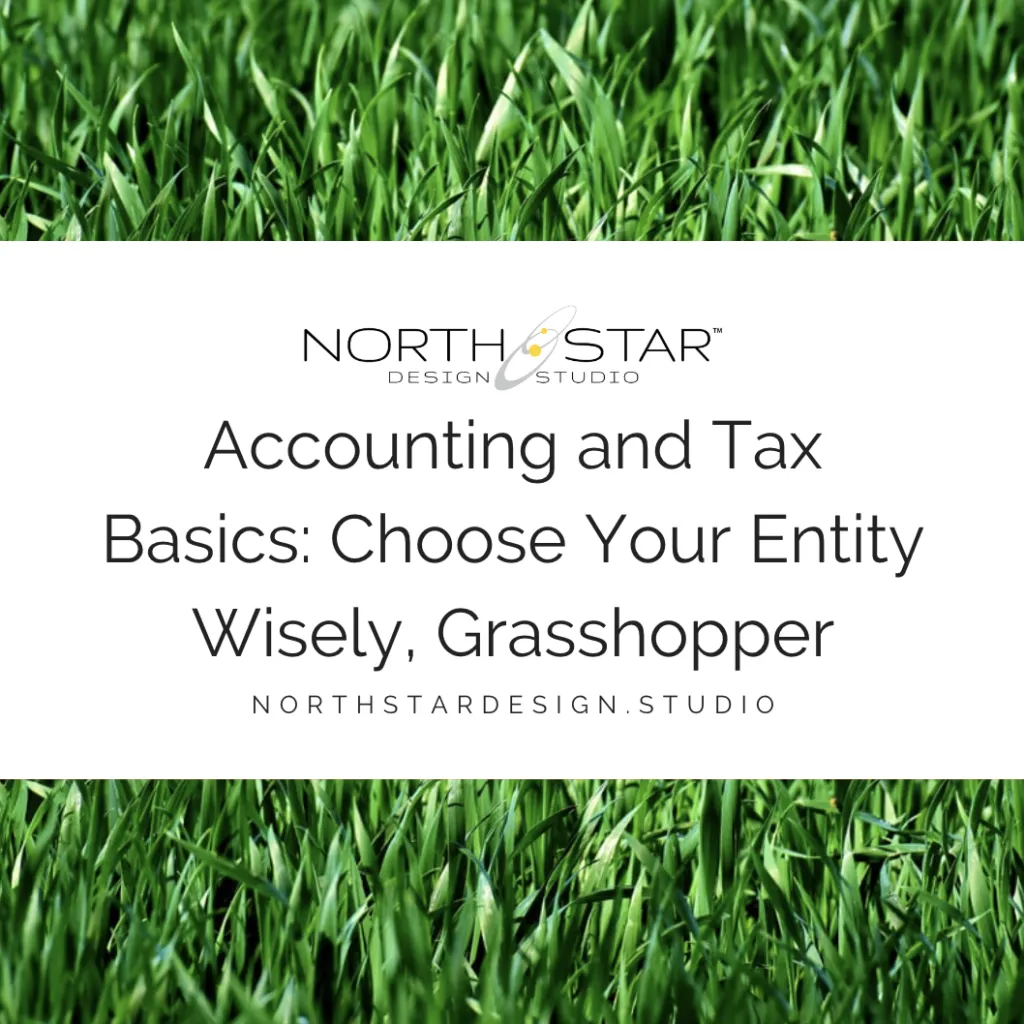Hey Future Moguls!
Congrats—you’ve decided to dive headfirst into the entrepreneurial pool. The water’s warm, but let’s not forget: just like any pool, there are some deep ends. Today, we’re going to put on our snorkeling gear and dive into one of those—the exhilarating world of accounting and taxes.
Intro: Why Your Entity Structure is a Big Deal
So, you’re fired up and ready to make those business dreams a reality. Awesome! But before you print those business cards, let’s talk about your entity structure. Trust us, this isn’t just tax jargon; it’s the bedrock of your financial future.
The Usual Suspects: Most Common Entity Structures
When it comes to entity structures, think of them like ice cream flavors—there’s something for everyone, but the best choice depends on your taste buds (and, well, your business needs).

Sole Proprietorship: The Lone Ranger
- The 411: You’re the boss, the employee, and the janitor. Everything’s on you.
- Taxes: All profits and losses go straight to your individual tax return.
- Watch Out For: A whopping 15.3% self-employment tax. Ouch. But hey, you can deduct half of it—glass half full, right?
- Payday: No W-2s here. You take money out as tax-free distributions since taxes are based on the business’s income.
This is probably the easiest way to start a business. In this structure, there is only one owner of the business and the income and expenses from the business would be reported on the owner’s individual tax return on Form Schedule C. The net income would be taxed at the owner’s tax rate.
Additionally, the owner will be subject to self-employment taxes, which are equal to 15.3% of self-employment income. Self-employment taxes represent the social security and Medicare taxes that would have been paid if the income was from a W-2 job. Since the self-employment taxes represent both the employer and employee portions of social security and Medicare taxes, you are allowed a deduction from your income of 50% of the self-employment taxes.
Lastly, owners of a sole proprietorship cannot receive a W-2 salary. Instead, owners will withdraw money from the business as distributions that are not subject to tax since you pay tax based on the income of the business.

Partnership: The Buddy System
- The 411: You and a friend (or enemy, but we don’t recommend that) go halfsies on a business venture.
- Taxes: The partnership itself doesn’t pay federal taxes. You and your buddy will get a Schedule K-1 to handle your share.
- Watch Out For: Some states might ask for a piece of the pie. Check local rules!
- Payday: No W-2s here either. You can either get guaranteed payments or take distributions, but consult a tax pro to keep things legit.
To be taxed as a partnership the business must have more than one owner. The partnership is required to file a separate tax return from the owners called Form 1065 and no tax is paid at the partnership level, at least for a federal return.
Some states have implemented a Passthrough Entity Tax as a workaround to the $10,000 limit on state and local taxes for itemized deductions on an individual tax return. This means that depending on the states in which you do business, a partnership may be subject to state income taxes. Each owner of the partnership will receive a Schedule K-1 from the partnership after the tax return is filed, which will provide each owner with the amount of income, deductions and other pertinent information that must be reported on the owner’s tax return.
Depending on the type of business the partnership is engaged in, the owner’s may be subject to self-employment taxes. Similar to sole proprietorships, owners of a partnership cannot receive a W-2 salary, instead they can receive either guaranteed payments or distributions. However, it is important to work with a tax professional to ensure your distributions do not exceed your basis in the partnership.

S Corporation: The Hybrid
- The 411: Like partnerships but with some perks. Even solo artists can join this club.
- Taxes: Owners must receive a reasonable W-2 salary. The rest of the income sidesteps that pesky self-employment tax.
- Watch Out For: Rules, rules, rules! Don’t ignore them, or you’ll lose those S Corp privileges.
- Payday: W-2 salary is a must, and additional profits are distributed according to ownership stakes.
S Corporations are similar to partnerships in that they must file a separate tax return, called Form 1120-S. However, S Corporations are allowed to have only one owner. There are some major differences between S Corporations and the rest of the structures.
For example, owners of an S Corporation must receive a W-2 salary that represents reasonable compensation compared to what somebody else performing the same level of services to the business would receive. Additionally, since the owners are required to take a salary, the income that flows through to the owner on Schedule K-1 is not subject to self-employment taxes.
S Corporations do not pay tax at the federal level, however since it is considered a form of corporation, there are several states where S Corporations will be subject to some form of tax, whether that be income tax or franchise tax.
Additionally, S Corporations are not allowed to have special allocations (whereas partnerships can). This means that all income, deductions, and distributions must be allocated to each owner in proportion to their ownership. S Corporations are often recommended due to the tax savings opportunities of no self-employment taxes on the business income; however, this structure does come with complexities and strict rules that if overlooked can cause the S Corporation election to be terminated.
It is important to work with a tax professional who is well versed in S Corporations to ensure you are following all the rules properly.

C Corporation: The Double Whammy
- The 411: This is a separate entity from you—think of it as your business’s own personal ID.
- Taxes: C Corps pay their own taxes. You can draw a salary and even snag some dividends.
- Watch Out For: Double taxation. Uncle Sam gets you coming and going.
- Payday: You’ll draw a W-2 salary, and any extra profit comes to you as taxed dividends.
C Corporations are a completely different animal than the other three structures. C Corporations are separate from their owners and file Form 1120. Tax is paid at the corporation level on business income and no income flows through to the owner’s tax return. Owners of a C Corporation can receive a W-2 salary from the corporation.
Unlike the other structures, owners of a C Corporation cannot receive distributions. Instead, they receive dividends which are subject to tax at the owner’s rates. This is also what causes the C Corporation structure to be subject to “double taxation” because the corporation will pay tax on its income at the corporate level and then when the income is paid to the owners through dividends the owners then pay tax at their level.
The CPA: Your Financial Yoda
Your CPA can give you the lowdown on how different entities will affect your tax bill. For example, did you know that a 2019 study from the National Small Business Association reported that 64% of small businesses spend over $1,000 on federal taxes each year? Your CPA can help you identify tax benefits and credits that might be specific to one entity type, so you’re not throwing money down the drain.
The Lawyer: Your Legal Guardian Angel
A lawyer helps you tackle the non-financial aspects, like liability and ownership structures. According to a report by the U.S. Chamber Institute for Legal Reform, U.S. small businesses pay an average of $150 billion in tort liability costs annually. Your lawyer will explain how different entities can either protect your personal assets or leave them exposed.
Two Heads Are Better Than One
Talking to both gives you a 360-view of what you’re getting into. You’ll understand both the financial and legal ups and downs of each choice, helping you make a well-rounded decision.
So, before you commit to a business structure, remember this: a convo with your CPA and lawyer isn’t just a formality—it’s a necessity.
TL;DR: One Size Doesn’t Fit All
Choosing the right entity can be like trying on shoes: some fit better than others, and your choice could either set you up for a comfortable stroll or give you blisters. Talk to your tax advisor, and let’s make sure you kick off this business journey on the right foot (or feet).
Stick around, because we’ve got more tips and laughs coming your way in our next articles. Until then, happy entrepreneuring!
About Ryan Elblein, CPA
Ryan graduated from the University of New Haven with a bachelor’s degree in and spent five years working in the tax department of two different national accounting firms. During his time in public accounting, Ryan worked on mostly pass-through entity and individual returns. He focused on the real estate, construction, and nonprofit industries and worked with consumer businesses (restaurants, gyms, etc.) Ryan started Elblein CPA in 2021 to use his knowledge of both public accounting and private industry to assist his clients in meeting their compliance needs and growing their business.





